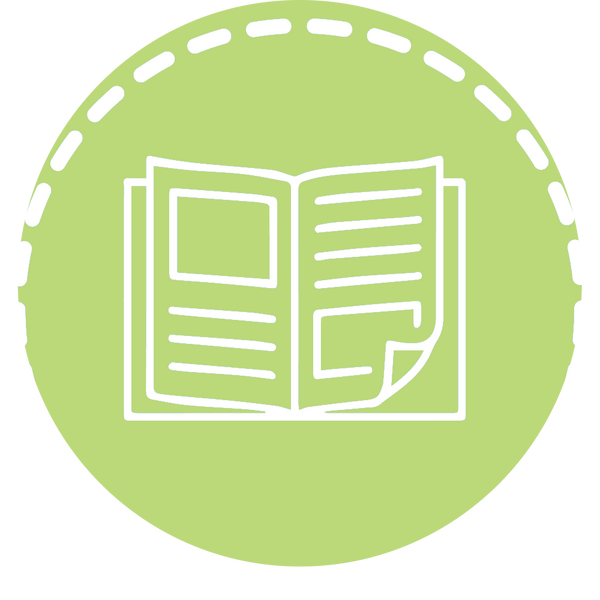
6 Ways STEM Strengthens Students' Listening Skills

Imagine a learning environment or workplace where every voice is genuinely heard and valued. This is the power of active listening.
Active listening bridges the gap between superficial conversations and meaningful connections. Learners who practice this skill absorb more information, apply their knowledge meaningfully, become well-rounded and experience great personal and professional growth.
Long-Term Benefits of Teaching Listening Skills
- Fosters Empathy and Cooperation. Active listening values a speaker's thoughts and feelings. The exchange reduces misunderstandings, resolves conflict more effectively and promotes a supportive environment wherein everyone feels respected.
- Increases Productivity. Improved listening leads to a clearer understanding of tasks. Learners who know what comes next can complete tasks more efficiently, often with greater success.
- Improves Social Awareness. Listening to others encourages learners to consider different perspectives. This understanding allows them to respond thoughtfully, rather than reactively.
- Strengthens Relationships. Active listening improves communication and strengthens interpersonal relationships. It builds a rapport among learners and encourages them to share more openly and honestly.
- Boosts Self-Empowerment. When learners feel heard, they are empowered to participate more actively. This newfound confidence motivates them to take risks and make discoveries.
STEM education allows learners to express themselves while fostering lifelong active listening skills. Its highly collaborative approach provides ample opportunities for learners to hear and be heard.
Six Ways STEM Amps Up Listening Skills
Beyond building technical know-how, STEM excels in Priming Your Students' Power Skills such as active listening. Its real-world exploration and hands-on learning approach make mastering listening skills engaging and rewarding.
Let’s explore six ways STEM K-12 educators can create dynamic learning environments where learners actively practice and refine their listening skills.
1. STEM Builds Background Knowledge to Support Active Listening
Read Alouds (Grades: 1-3)
Picture books capture listeners' attention. Engaging writing, vivid illustrations and educators' expressive character voices all contribute to the magic. Read alouds bring less accessible experiences and background knowledge into any learning environment, amplifying learners’ interest and desire to listen.
Cubelets BOT Builder lessons typically begin with a read-aloud session. Each kit includes carefully selected picture books designed to engage learners in grades 1-3. These stories set the stage for each lesson, helping learners focus on learning objectives. They introduce keywords and phrases that learners listen for as they engage in STEM activities. It’s like an active listening word bank at the start of every day!
Hands-On Learning (Grades: 6-8)
Building background knowledge helps a listener understand the broader context of a discussion. For example, in Survivor for grades 6-8, learners are told a true, cautionary story that warns them to always confidently identify any plant they intend to eat in the wild.
Listening to the story is eye-opening, but the hands-on activity that follows further strengthens learners’ knowledge. Don't worry! Campers are asked to handle a completely edible plant — a dandelion. If they're feeling adventurous, they can even taste each part. No matter how hands-on they get, an experience like this adds background knowledge that can be applied to other plants they may encounter. Hands-on STEM brings what we hear to life.
Understanding Audiences (Grades: 6+)
Crafting a meaningful online presence involves building a connection with audiences. With Influencer Camp, 6th to 12th grade future influencers collaborate to discover how listening to audiences builds a brand and grows their social media following.
Each production team collaborates to build a platform focused on a topic or niche they are knowledgeable about. This background knowledge helps them understand what their audience is interested in and allows them to respond by creating relevant content.
Teams also listen carefully to their content coordinator, an important production team member responsible for crafting the overall vision for the content. Their constructive feedback on authenticity, honesty and relatability is essential for the group's success.
For more on how background knowledge contributes to stronger comprehension, check out STEM Meets The Science Of Reading.
2. STEM Nurtures Active Listening with Collaborative Projects
STEM activities are great for boosting active listening skills. Our programs promote teamwork, challenging learners to collaborate toward a shared goal.
In these collaborative projects, team members must often clarify instructions, ask questions and receive feedback. Our programs create supportive learning environments where learners feel comfortable engaging in team-based activities, fostering a culture of open communication and strong listening skills.
Building a robot with a team can be challenging! Learners will want to grab the pieces and jump right in. But slowing down to listen to their teammates leads to greater success.
Before starting, learners review their Cubelet Build Cards to clarify instructions and ensure they have all the necessary materials to achieve their goals. Limiting the materials they have out in their workspace makes a big difference. Team members can focus on the conversation when there are limited distractions.
- Yesterday, each of you acted like a molecule in the water cycle, and almost everyone started in the ocean because that’s where most of Earth’s water is. What happened to the molecules that evaporated out of the ocean? (They turned into water vapor.)
- What happened to the molecules that got condensed? (They turned into clouds.)
- What happened to the molecules that precipitated — fell down as rain — into a lake? (There are lots of possible answers, but one is flowing into the ocean.)
- Okay, so how did those molecules get from the lake to the ocean? (Rivers.)
Active listening during reviews allows learners to articulate their thoughts and questions more clearly. They listen to others, enriching their comprehension through collaborative learning.
Survivors discover that listening is a superpower. In one camp activity, as a blindfolded partner starts to walk, their partner continuously calls out their name. Blindfolded partners use the voice as a guide to walk forward in a straight line.
This exercise improves active listening by encouraging the blindfolded partner to focus intently on auditory information, heightening their awareness and responsiveness to sound.
In a lesson all about music videos, groups are encouraged to record their own songs (complete with homemade instruments) that teach rules to younger learners. For example, they could create videos about rules for walking the halls or dismissal routines.
Before sharing their videos with their audience, teams are encouraged to rewatch, review and re-record their work as needed. This implements a system where teammates can practice listening to constructive feedback to help them produce their best work.
3. STEM Models and Practices Key Listening Skills
To all introverted learners, we hear you! Collaboration is a huge part of STEM education, but what about learners who typically shy away from social situations? How can educators support and encourage their participation?
Discover Digital Video LAB is an interactive learning experience with programming options tailored for learners in grades 1-5 and 6-12. Even if getting in front of the camera seems daunting for some, every learning style can shine brightly throughout these units.
-
Highlight the value of great listeners as team members.
Sharing ideas might not be in a learners’ comfort zone yet, but they can still contribute significantly by using active listening skills. Great listeners often make excellent note-takers, providing valuable summaries for their team to consider as they plan their next steps. When planning game show questions or brainstorming a silent movie storyline, an effective production teammate listens deeply and reflects on the discussion before sharing. This thoughtful approach can inspire greater innovation within the group. -
Authentically practice active listening skills.
The right STEM curriculum is full of authentic learning opportunities. At the start of the unit, learners conduct interviews to practice important active listening skills. Maintaining eye contact, paraphrasing responses and developing relevant follow-up questions are valuable skills that strengthen learners’ social development. -
Model active listening during class discussions.
Like all PCS Edventures’ Educator Guides, Discover Digital Video LAB includes discussion questions that extend activities and deepen learners' understanding. Use these to demonstrate active listening skills that learners can replicate during group work.
4. STEM Uses Strategies for Strengthening Listening Comprehension
Podcasts are a fun, effective way to practice active listening skills. Unlike a lot of other media out there, podcasts are all about what you hear—no pictures or text to distract you (apart from transcripts, if provided).
Studies have shown that podcasts strengthen listening comprehension, especially in English Language Learners. Their conversational style makes it easy to absorb information. As a bonus, they’re entertaining, which boosts learners’ motivation to engage with the content (Ramirez 2024).

Our Geek Out with STEM Podcasting freebie, inspired by Discover Podcasting, is the perfect way to get middle and high school learners started! They can listen and learn about their classmates through student-created podcasts. It’s a fun way to practice speaking and listening skills while building connections.
Not quite ready for podcasting? Practice listening comprehension with a freebie inspired by BrickLAB Magic Beans. Perfect for young learners, our Fractured Folktale: Paul Bunyan STEM activity includes an original fractured tall tale. Read it aloud or inspire learners to bring their rendition of the story to life. They’ll love listening to and imagining scenes from such hilariously exaggerated tales.

5. STEM Immerses Learners in Tier 3 Vocabulary
Teaching content-specific, or Tier 3, vocabulary can be challenging. While they strengthen learners’ understanding, these low-frequency words can be difficult to remember and use naturally.
STEM immerses learners in content, providing many opportunities to use Tier 3 vocabulary in context.
Let’s take a look at active listening’s role in helping K-12 learners and educators confidently use technical terms.
Tuning into Learners’ Conversations (grades 1-3)
Educators facilitating Cubelets BOT Builder help young roboticists by correcting the misuse of terms. After building their first iteration of the Dim-Bot on Day 2, learners must collaborate to re-evaluate their build and predictions before modifying their design. Educators listening in on teams’ conversations can provide clarification, resolve misunderstandings and reinforce proper usage in real-time.
Listening for Meaningful Follow-Up (grades 4-6)
Internalizing Tier 3 vocabulary is also in the learner’s hands. It’s up to them to use active listening skills to question or rephrase what they hear.
Before diving into the Oceanic Exploration unit, words like "buoyancy" or "adaptation" may not pop up in their everyday chats (though by the end of the program, we bet you'll hear them tossing these terms around with glee!). Soon learners are better able to retain and effectively use content-specific terms in discussions or written explanations.
Hearing Directly from Industry Experts (grades 6+)
With Discover Podcasting, 6th-12th graders have the unique opportunity to hear all about the podcasting industry, thanks to experts in the field! They can listen to recommended podcasts, watch informative videos led by industry professionals and engage with materials designed with input from real-world podcasting leaders. This way, they continuously learn about the nuances and appropriate contexts for podcasting-specific terms.
6. STEM Empowers Learners to Listen to and Trust Themselves
Last but certainly not least, STEM education can be a wonderful avenue for nurturing mindfulness. As learners progress through programs, they learn to trust their ideas, listen to their intuition and harness their creativity.
Teaching Mindfulness Strategies with STEM
For many young learners, Brick LAB Magic Beans may be their first experience as engineers. As any engineer knows, failure comes with the excitement of creation.
This unit emphasizes that failure is advantageous, teaching learners about "failing forward." Along the way, they will encounter failure. Their construction might fall over, or they might struggle with the design challenge, but that's okay! Failing forward means that when they inevitably face a setback in their design plans, they have simply learned the best way not to do it. From there, they can make adjustments and keep moving forward.
Survivor advocates that a learner’s most valuable survival tool is their brain. Repeated throughout the program, this message helps learners listen to their intuitions and believe in their abilities. With practice, this self-confidence can trickle into their everyday lives.
Check out the STOP strategy survivors practice to help them stay calm in any emergency:
S – Stop: Stay put and stay calm.
T– Think: How did you get here?
O – Observe: Use all of your senses and resources to figure out where you are, where you came from and where you need to be.
P – Plan: Make a plan on how to proceed. Do not leave until a firm plan is in place.
Influencer Camp is all about creating an authentic, honest and relatable brand presence. To do this, influencers must understand both their audience and themselves. By trusting their instincts and being true to themselves, learners are free to create high-quality content that connects with their viewers.
Engaging deeply with STEM sharpens learners’ focus, making them more aware of how concepts fit together. It's not just about mastering a subject. It's about seeing the bigger picture and appreciating how everything connects.
More Mindfulness STEM Resources
Help learners listen to what their emotions tell them with The Mindful Student: STEAM Activities to Promote Emotional Wellness. Inspired by the creative lessons in Summer Camp Classics for grades 6-8, this free download invites learners to engage in soothing tasks to clear their minds and find balance.
Listening Beyond Classroom Walls:
Want to change the world? STEM education is the place to start!
Our wide-ranging topics tune learners into causes that matter. From raising social awareness to supporting endangered species, STEM encourages learners to roll up their sleeves and get creative.
Unleash Your Wild Side
Grades: 1-3
Raising global awareness with each artistic creation, this program inspired our free resource, Operation Animal Conservation. Encourage learners to create a public service announcement (PSA) that raises awareness for an endangered species. Whether recorded or performed live, they'll be eager to listen to their peers' PSAs. It’s a wildly fun way for young learners to practice speaking and listening skills.
Oceanic Exploration
Grades: 4-6
Connecting STEAM lessons to real-world issues empowers 4th-6th graders to become informed global citizens, helping them grasp how their actions affect the environment. As they learn about the pressing challenges of overfishing and species extinction, they’re motivated to find solutions and take responsibility for protecting wildlife.
Influencer Camp
Grades: 6+
Blending 21st-century skills with active listening, learners in grades 6-12 discover the best aspects of the world wide web — hearing diverse perspectives and developing strong communication skills. They’ll explore how influencers use their online platforms to positively impact an increasingly interconnected world, often teaming up with non-profit and charitable organizations to make a difference.
These exciting programs invite learners to listen with their ears and engage with their creativity, nurturing a community of problem-solvers prepared to address the challenges facing society.
Engage, Listen & Succeed with STEM:
STEM education captivates learners with exciting challenges that fuel their curiosity and sharpen their active listening skills. These skills are essential in the professional world, where effective listening fosters better communication, teamwork and problem-solving. By teaching active listening, STEM educators pave the way for a more collaborative and productive work environment.
Looking for a fun way to practice listening? Check out The Art of Storytelling: Feedback Strategies for Success. Inspired by Discover Podcasting, we’ve developed five easy-to-implement activities for middle and high schoolers that bring the power of story slams to any learning environment.
Whether you're a Discover Podcasting pro or just interested in what it has to offer, these activities seamlessly integrate into the curriculum. Let's make storytelling and active listening accessible and engaging for all!
Tell us in the comments below.

Author: Jessica Ventre
An experienced elementary educator and science instructional coach, Jessica’s passion for STEM instruction and student-led learning is always at the forefront of her lessons and professional development workshops.

















